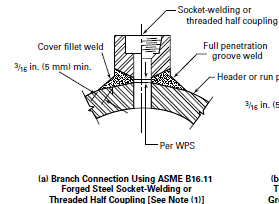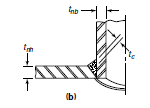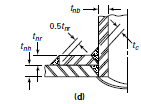Hi,
What is a stronger connection between Half Coupling and a Stub in for branching of a pipe?
For Stub in we get a butt weld connection which is stronger in branch as opposed to 2 welds in half coupling? Why do we still use half coupling as we have to anyways make a hole in the run pipe in both cases?
What is a stronger connection between Half Coupling and a Stub in for branching of a pipe?
For Stub in we get a butt weld connection which is stronger in branch as opposed to 2 welds in half coupling? Why do we still use half coupling as we have to anyways make a hole in the run pipe in both cases?



